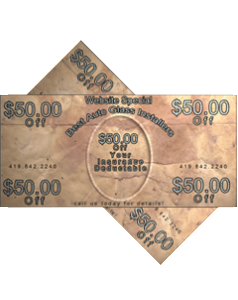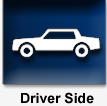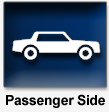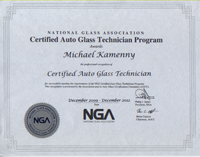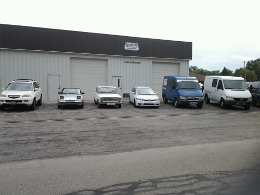Auto Glass Repair Terms
Know Which Side is Which for Auto Glass Repair
When you are asked which side of the car something is on, you will often hear the terms “passenger side” and “driver’s side.” These are the terms associated with car sides, not just in the auto glass world, but anything that has to do with the automotive industry.
When we speak of “Left” and “Right” sides, think of yourself sitting in the vehicle to understand the correct left and right sides of the car. The left will generally be the driver’s side, the right the passenger’s.
Auto Glass Glossary of Terms
Acoustic Interlayer– Auto glass with a thicker layer of vinyl laminate that aids in noise reduction.
Adhesive– The “glue” that bonds glass to painted metal. Its strength is measured in two ways called “tensile” and “lap shear.”
AGRSS– Automotive Glass Replacement Safety Standards. These are the safety standards used by the vast majority of auto glass industries.
Butyl– A type of sealant that was used primarily in the 60’s and 70’s. These only had lap shear strength of 13 psi, while modern adhesives have 500 psi.
Diversity Antenna– Antennas for radio reception that are built into the windshield. These are the thin brown or orange wires you see inside the glass and allow for better reception.
Dot Matrix Shade– Located on top of the windshield, this is a pattern of dots painted on the glass to help with glare without having to tint the windows.
Electrochromic Mirror– A rear-view mirror with light sensors. It dims in bright light. They are also known as Auto-Dim Mirrors.
Encapsulated– A glass part that is inserted into a mold and injected with a molten plastic or rubbery material which causes the mold to meld to the glass.
Frit– The area around the edge of the windshield. This is usually painted black and helps not only with glare, but bonds the glass to the car’s structure.
Heated Wiper Park Area– The brown or grey lines at the bottom of the windshield. This is the area where the wipers rest.
High Modulus Adhesives– A type of adhesive. High Modulus adhesives are stiffer than normal to undergo stresses and maintain their form.
HUD– Heads up display. Important instrumental information (such as speed) is reflected on the lower windshield. This is so someone can view it without taking their eyes off the road.
Infrared– A term used to describe Solar Coated glass.
Laminated– Two layers of glass surrounding a layer of PVB. Laminated glass serves several purposes in the front windshield, such as to cushion a driver or passengers head in case of impact. This why it’s important that they are installed properly.
Laser Deletion Area– In the case of solar coated glass, a small area is clear of the solar coating, so that lasers may pass through.
Light Sensor– A sensor that detects light and darkness. It is usually located on the windshield and is used to automatically turn on a car’s headlights when it becomes dark.
Night Vision– An infrared camera is mounted on a vehicle to detect objects outside of headlight range. Images are displayed on a part of the windshield.
Nonconductive Adhesives– Most adhesives for auto glass contain carbons which make them conductive. In cases where conductivity is detrimental, nonconductive adhesives must be used.
O.E.M.– Original Equipment Manufacturer
PVB– Polyvinyl Butyral. The material between two layers of glass.
Rain Sensor– A sensor that detects when it’s raining and automatically activates the windshield wipers.
Safe Drive Away Time– This is the span of time after a windshield is installed before it would pass all safety instructions.
Solar or Solar Absorbing– Glass that keeps the inside of your car cooler and makes the light less harmful by blocking ultra violet and infrared rays.
Solar Coated– Auto glass that is covered with a UV-reflective coating before it is plied with the PVB layer.
